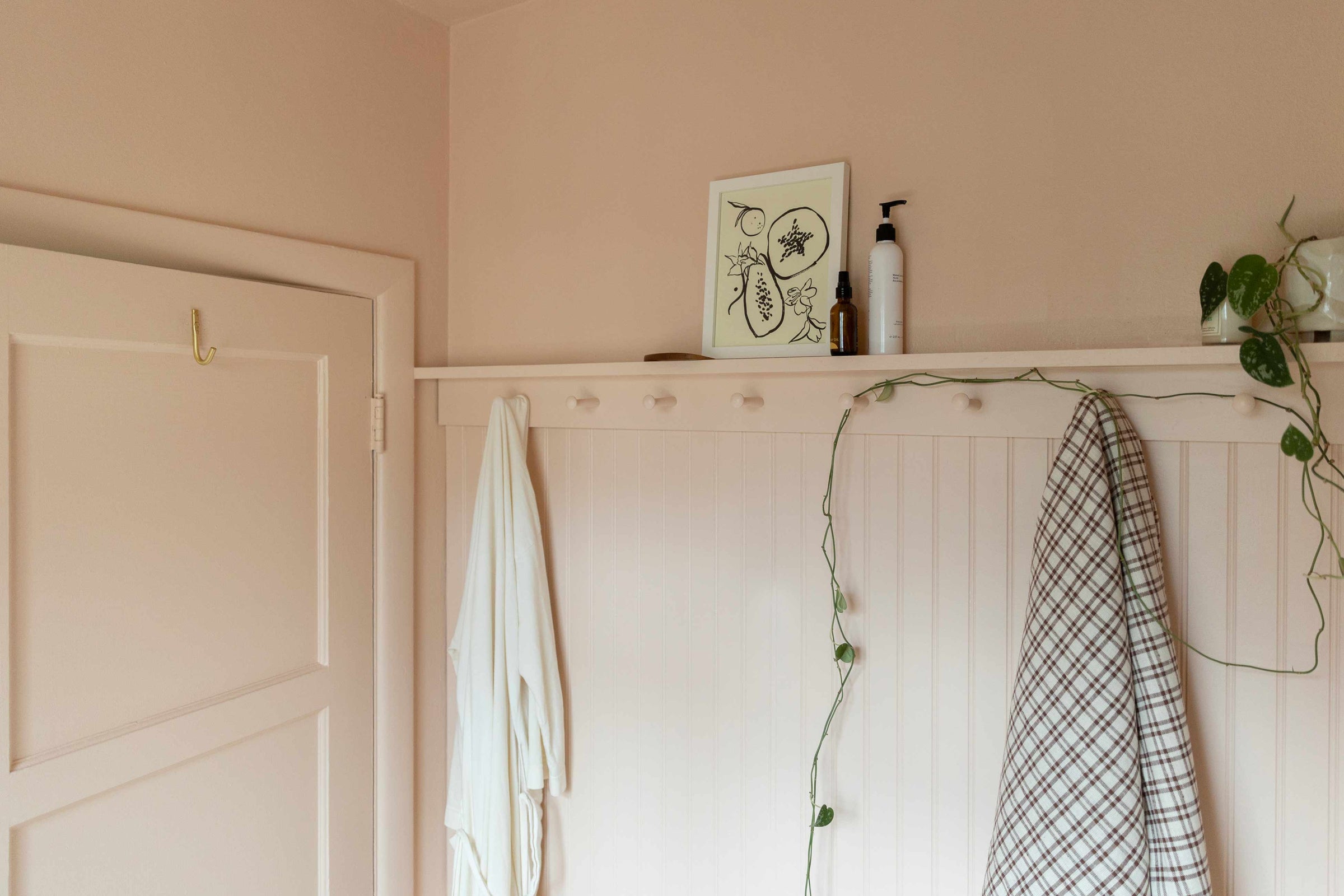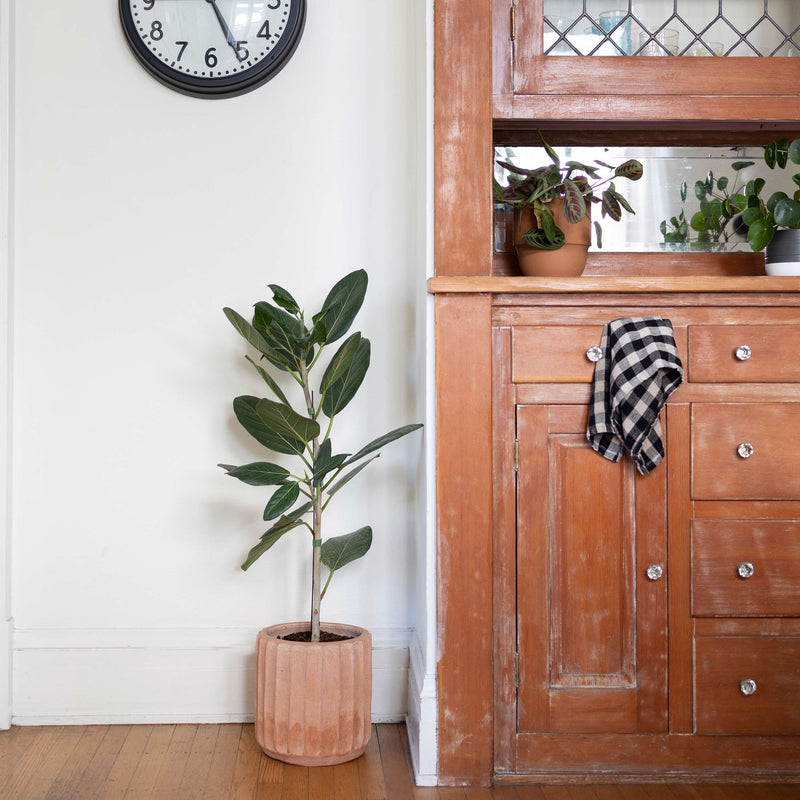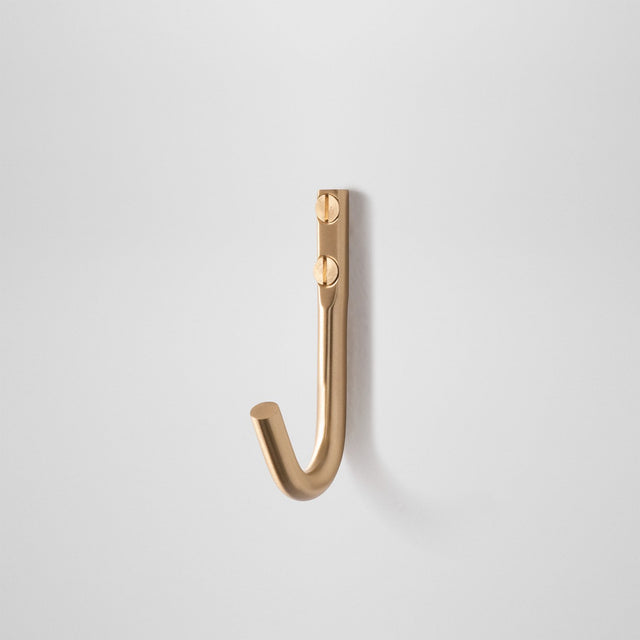How-To: Install A DIY Beadboard Wall In 3 Steps

If you're looking for a simple yet effective way to add charm and character to any room in your home, we might just have the perfect solve. Recently, our coworker Chelsea added a beadboard (also known as wainscoting) wall as part of her bathroom makeover, and we loved it so much that we wanted to ask her how she did it.
If you're not familiar, this type of paneling has been a classic design element for centuries, and is known for its timeless look and versatility. Whether you're going for a traditional aesthetic or a more modern vibe, beadboard is a simple and effective way to elevate any space.
In this post, you'll find all the information you need to create a beadboard wall in your own home, plus some helpful tips and tricks to guide you through the (relatively easy) process.
Before:

Supplies:
- Beadboard Panels: Beadboard panels come in different sizes and styles, so make sure to measure your wall and choose the appropriate size and style for your project.
- Trim Boards (2): Measure the length of your beadboard so that you can install a trim board above it and cover the raw edges. Additionally, if you want to create a shelf like Chelsea did, you'll need another board at the same length to nail to the top of the trim board.
- Shaker Pegs: Be sure to purchase the ones with screws on the back for easy install.
- Nails + Nail Gun: If you're using beadboard panels that require nailing or screwing, you'll need a nail gun or drill and appropriate nails or screws.
- Spackle: You'll need spackle to fill in any nail or screw holes and seams.
- Sandpaper: Sandpaper will help you smooth out any rough spots on the beadboard.
- Primer: It's recommended to prime the beadboard before painting or staining it to ensure proper adhesion and a smoother finish.
- Paint: Choose a paint color that complements your decor and follow the manufacturer's instructions for application.
- Paint Roller, Brush, and Paint Tray: You'll need a roller and brush to apply the paint to the beadboard.

Step 1: Prepare and Measure
Before installing your beadboard, it's important that the surface is clean, dry, and free of any obstacles. If you are installing beadboard over drywall or plaster, it is advisable to remove any wallpaper or paint and sand down any rough spots.
Once the area is clear, measure where you will be installing the beadboard to determine how many panels you will need. There are a few different types of beadboard, but for this project Chelsea used Home Depot's "Beadboard White True Bead Panel" made from HDF material.
Step 2: Cut to Size
For this step, Chelsea actually had her pieces cut to size at Home Depot where she purchased the materials. That said, if you have tools at home, you can use a circular saw or a jigsaw to cut the panels to your desired size.


Step 3: Install the Beadboard and Trim
There are a few ways you can adhere beadboard to a wall, but for this particular project Chelsea used a nail gun for installation. If you don't have a nail gun (Chelsea actually rented one from Home Depot for this project!), you can apply construction adhesive to the back of your beadboard panel using a caulk gun, but be sure to apply adhesive to the edges and corners of the panel to ensure a secure bond.
Before you get started, check to see if you need to cut around any outlets, switches, or other obstacles. If so, you can use a jigsaw to do so (if you don't have access to a jigsaw, you can get scrappy and use miter shears depending on the material of your beadboard, but it might not be the prettiest!).
If you're going the nail gun route, start by positioning the panel on the wall and press firmly into place while someone else uses a level to ensure that the panel is straight. Then, use a nail gun to secure the panel to the wall. Nail the panel every 6-8 inches along the edges and corners to ensure a secure attachment. You can also add a few nails in the middle of the board to make sure it's flush with the wall behind it.
Tip: Depending on what type of beadboard you choose for your project, there can be a small gap when lining up your cut pieces. To fill in the gap, I used DAP DryDex Spackling Compound, and then gave it a light sanding once it was dry. It filled in the gap perfectly in this case!

Once all the panels are installed, you can install the trim in the same manner. Simply hold it up against the wall, ensure it's level, and use a nail gun to secure it in place. To create the shelf, Chelsea simply put another piece of trim board on top of the existing one and nailed that into place using the nail gun as well (about eight nails in total, but it depends on the length of your wall!).
Adding shaker pegs to the finished product really made it stand out. She purchased 3 inch long screw-on shaker pegs from Amazon to complete the look. Simply screw them into place and viola!
Once everything has been installed, use wood filler to fill any nail holes or gaps between panels. Sand the surface smooth and finish with the paint of your choice.




